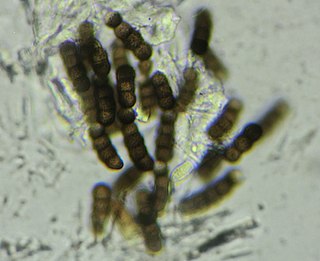Related Research Articles

Marguerite Germaine Marie Donnadieu, known as Marguerite Duras, was a French novelist, playwright, screenwriter, essayist, and experimental filmmaker. Her script for the film Hiroshima mon amour (1959) earned her a nomination for Best Original Screenplay at the Academy Awards.
Bartholomaeus Anglicus, also known as Bartholomew the Englishman and Berthelet, was an early 13th-century Scholastic of Paris, a member of the Franciscan order. He was the author of the compendium De proprietatibus rerum, dated c.1240, an early forerunner of the encyclopedia and a widely cited book in the Middle Ages. Bartholomew also held senior positions within the church and was appointed Bishop of Łuków in what is now Poland, although he was not consecrated to that position.

Thomas Hearne or Hearn was an English diarist and prolific antiquary, particularly remembered for his published editions of many medieval English chronicles and other important historical texts.

Eaton Bray is a village and civil parish in Bedfordshire, England. It is situated about three miles south-west of the town of Dunstable and is part of a semi-rural area which extends into the parish of Edlesborough. In the 2011 United Kingdom census the population of the parish was recorded as 2,585.
De Dubiis Nominibus is a 7th-century document, possibly from Bordeaux, by an anonymous author. It is an alphabetically sorted list of words whose gender, plural form or spelling was in question by the author. The author attempted to resolve the questions through citations from classical and Christian authors with notes next to each word.

Tatwine was the tenth Archbishop of Canterbury from 731 to 734. Prior to becoming archbishop, he was a monk and abbot of a Benedictine monastery. Besides his ecclesiastical career, Tatwine was a writer, and riddles he composed survive. Another work he composed was on the grammar of the Latin language, which was aimed at advanced students of that language. He was subsequently considered a saint.

Pseudo-Apuleius is the name given in modern scholarship to the author of a 4th-century herbal known as Pseudo-Apuleius Herbarius or Herbarium Apuleii Platonici. The author of the text apparently wished readers to think that it was by Apuleius of Madaura (124–170 CE), the Roman poet and philosopher, but modern scholars do not believe this attribution. Little or nothing else is known of Pseudo-Apuleius apart from this.

Johannes de Garlandia or John of Garland was a medieval grammarian and university teacher. His dates of birth and death are unknown, but he probably lived from about 1190 to about 1270.

Bazoches-lès-Bray is a commune in the Seine-et-Marne department in the Île-de-France region in north-central France.

Bray-sur-Seine is a commune in the Seine-et-Marne department in the Île-de-France region in north-central France.

Mousseaux-lès-Bray is a commune in the Seine-et-Marne department in the Île-de-France region in north-central France.
Phoma herbarum is a fungal plant pathogen infecting various plant species, including Alchemilla vulgaris, Arabis petraea, Arenaria norvegica, Armeria maritima, Bartsia alpina, Capsella bursa-pastoris, Erysimum, Euphrasia frigida, Honckenya peploides, Matricaria maritima, Rumex longifolius, Thymus praecox and Urtica dioica.

Saint-Sauveur-lès-Bray is a commune in the Seine-et-Marne department in the Île-de-France region in north-central France.

Gournay-en-Bray is a commune in the Seine-Maritime department in the Normandy region in north-western France.
Harold Emery Moore, Jr. was an American botanist especially known for his work on the systematics of the palm family. He served as Director of the L. H. Bailey Hortorium at Cornell University, and was appointed Liberty Hyde Bailey Professor of Botany in 1978. He was an important contributor to Hortus Third and was editor of Principes, the journal of the International Palm Society. He also edited Gentes Herbarum and provided the foundation for the first edition of Genera Palmarum, a seminal work on palm taxonomy which was later completed by Natalie Uhl and John Dransfield.

Anglo-Saxon riddles are a significant genre of Anglo-Saxon literature. The riddle was a major, prestigious literary form in early medieval England, and riddles were written both in Latin and Old English verse. The pre-eminent composer of Latin riddles in early medieval England was Aldhelm, while the Old English verse riddles found in the tenth-century Exeter Book include some of the most famous Old English poems.
The Lorsch riddles, also known as the Aenigmata Anglica, are a collection of twelve hexametrical, early medieval Latin riddles that were anonymously written in the ninth century.
John Walton was an English entomologist who specialised in Coleoptera especially Curculionidae. His collection is held by the Natural History Museum, London John Walton was educated in first in Knaresborough then in London where he studied Chemistry at the Mathematical Society of Spitalfields, then applying his science to sugar refining in his uncles refinery based in Whitechapel whom he succeeded in that lucrative business. By then wealthy he retired in 1832 to devote himself to entomology. He corresponded with Carl Johan Schönherr, Ernst Friedrich Germar and Louis Alexandre Auguste Chevrolat exchanging specimens with all three.
Cladosporium herbarum is a common fungus found worldwide in organic and inorganic matter. It is efficiently distributed in the air, where it exists as the most frequently occurring fungal species. It can grow over a wide range of temperatures including very cold environments, giving it the ability to grow on refrigerated meat and form "black spots". Its high prevalence in the air and production of allergens makes C. herbarum an important exacerbant of asthma and hay fever.

Torula herbarum is a darkly-pigmented filamentous fungus in the phylum Ascomycota. It is often included in the unrelated but morphologically similar group of fungi known as sooty molds. It was first described by Persoon in the genus Monilinia based on similarity to the agent of brown rot of stone fruit but later transferred to the genus Torula by Link. Conidia of T. herbarum are dark brown or olivaceous colour and have a distinctive shape and number of cells. T. herbarum produces secondary metabolites with cytotoxic activity towards bacteria and human cancer cells.